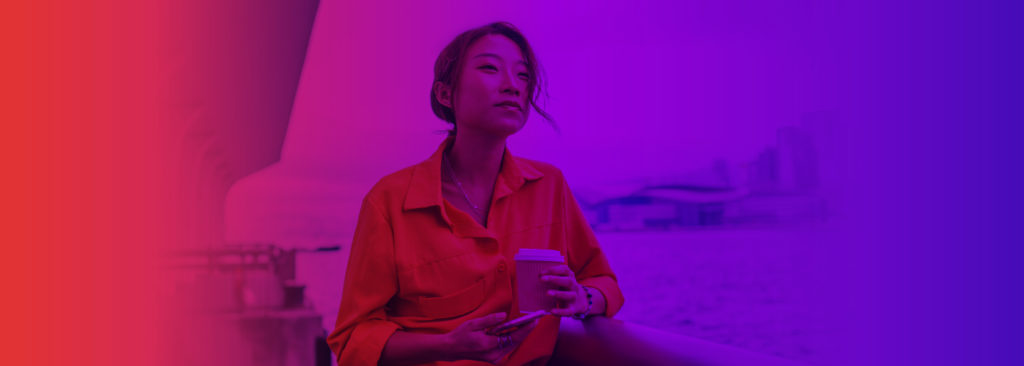When I moved to a new apartment in 2018, a friend told me that it would take at least a year to feel settled. I hadn’t moved in a while, so I said, “Nah, I’ll get settled into this place pretty quickly.” I ate my words when my yearly lease reminder came up. I looked around and thought to myself, “Yep, I’m just now feeling settled.”
I’m sure you know where I’m going with this. At the year mark for when the world came to a screeching halt, it feels that, just now, I’m getting somewhat used to things. My mom and I were recently catching up. She’s retired now but had a packed calendar of family events pre-covid. On that call she said, “I realized today that I like not having a full schedule.”
Most of us are struggling with some sort of change fatigue, and lo and behold, there’s certainly more change to come. Vaccinations are ramping up, the weather is getting warmer, people are getting antsy, and returning to the office (or not) is on the top of everyone’s mind. In my mother’s case, the family commitments are slowly creeping back. Although this change is a welcome one on just about every front, it doesn’t mean that it’ll be smooth sailing. Remember, even positive change can be stressful.
Resilience required
During these times of change, however they fall on the scale of difficulty for you, we need to tap into our resilience. A close friend told me once many years ago that she viewed me as a resilient person. I didn’t quite understand what she meant at the time. All I can say is that in late March last year, when I was lying in my bed staring up at the ceiling with tears streaming down my face, resilience was far from how I felt and the last thing on my mind.
Merriam-Webster defines resilience as the “ability to recover from or adjust easily to misfortune or change.” This last year has been an onslaught of adjustments: Many experienced extended work-from-home situations for the first time. Many others lost jobs, or they gained kids at home all day, or both. Some grew sick and tired of the political noise, and some grew just plain sick and tired. More still lost loved ones as they battled with the virus.
Resilience has been on my mind now more than ever since it seems navigating change has become the norm both on the individual and organizational level. McKinsey, for example, has written quite a lot about change and resilience lately, with one article arguing that “changes in the environment and in the global economy are increasing the frequency and magnitude of shocks.”
That’s why it’s crucial we all learn how to be resilient in the face of change. Organizations are learning the same skills corporately as we are individually: How to cope with change, become more flexible and agile as demands arise, and so much more.
Returning to the office
Leaders and employees will need better resilience skills as they (more than likely) figure out how to navigate getting back into the office. Although some companies like Salesforce are letting their employees work from home full-time or part-time after the pandemic, others will require everyone to come back to the office most of the time. Either way, to quote the Salesforce leader in the article cited above, “we’re not going back to the way things were.”
But what does it mean to build resilience skills, and how do we tap into them again this time around? To be sure, resilience can be an innate trait some are born with. At the end of the day, however, resilience can be taught and learned by anyone.
I come from a family of hard-working midwesterners that believed that by putting your head down and getting the work done, you demonstrated commitment. I can honestly say I think this had a big impact on my resilience. And, at the same time, I’m not sure it taught me the best way to take care of myself first for the long haul.
As we think about going back to work, however that looks for organizations, I believe that we have to stay flexible, agile, and curious. Doing so will help us transition into the next phase of change in the most productive way for our teams and lead us to better post-pandemic culture and outcomes.
***
On that note, we at Sayge have taken a fresh look at ourselves and our own resilience. We want to support you first so that you can do the absolute best work at any stage of your working life, especially through times of change.
Our vision has always been to support our coaches, coachees, and customers in the best way possible. That’s why you’ve been invited to join. This post marks the start of a fresh perspective on how we do that through tips, advice, collaboration, and tools to sharpen our focus.
Moving forward, we’ll be sharing even more insights, ideas, thoughts, and support through newsletters, blog posts, a podcast, polls, Q&A, and informative content on our Sayge Community LinkedIn group based on monthly themes. If you’re here, you’re already someone we consider part of our community to receive these insights!
We know this community will only get better with your thoughts, feedback, and questions. So, we’ll often be asking how we can better support you.
Here are a few starting questions for you:
- How have you dealt with change in the past?
- How about this year?
- What does change mean to you?
- Do you have any tips for navigating change?
I’d love to hear what resilience means to you in the Sayge Community LinkedIn group!
Thanks for reading,
Katie

